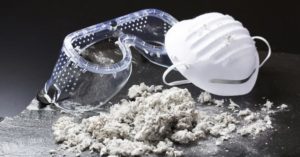Asbestos was once used commonly in the building of homes. Exposure to it has been found to cause mesothelioma, a cancer of the lining of the chest and the abdominal cavity and asbestosis, where people’s lungs become scarred with fibrous tissue. Given this danger,  how can you ensure asbestos safety in the home?
how can you ensure asbestos safety in the home?
First, know that asbestos in good condition—not damaged or worn—is not a hazard. There is no reason for alarm if asbestos is simply in your home. The risk comes from damaged asbestos, which can release fibers into the air. It is the fibers that are harmful.
Second, the safest thing you can do with asbestos is to leave it alone. Examining it or poking it might damage it, release fibers, and end up causing the very harm you are trying to avoid.
Third, know where to look for asbestos. Asbestos is found in multiple places in the home. Some are in places where consumers don’t know to expect it; many products sold for gas-powered fireplaces, such as artificial ashes, might contain asbestos. Others are in the home itself. Asbestos cement is used in some shingles and siding.
Fourth, avoid damaging asbestos if you find it. That includes dusting or vacuuming material that might contain asbestos or sawing, sanding or scraping it. Remember that activities that seem like simple work can damage the delicate fibers—and send them into the air.
Fifth, if you find damaged asbestos or damage existing asbestos in your home, you must call an experienced, certified professional to remove it.
Contact us for your safety and security needs.







